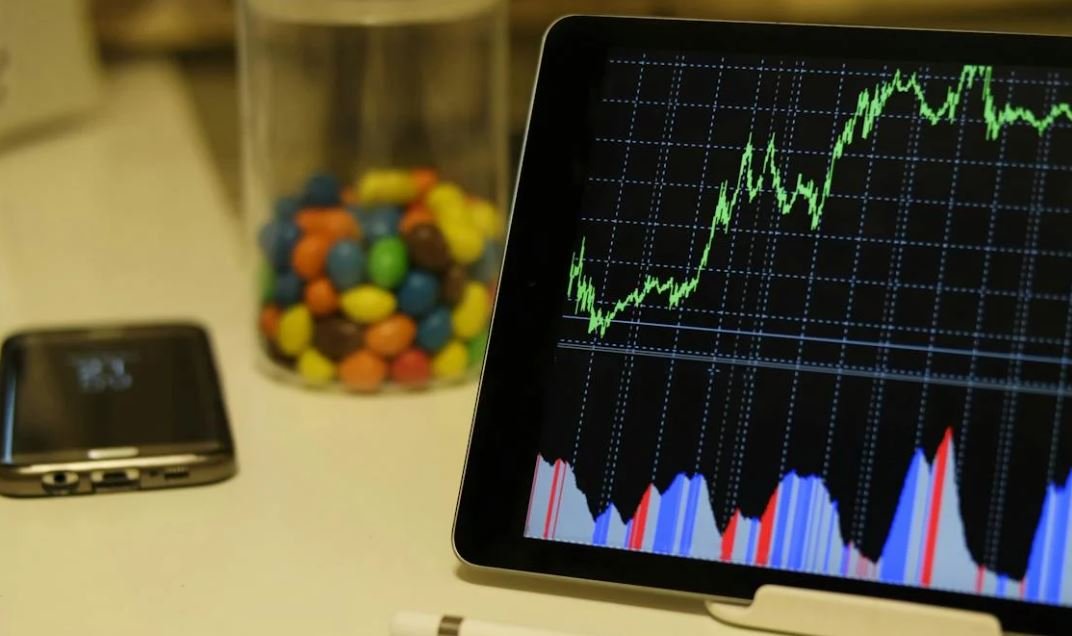Why Film in 24fps
Film is known for its ability to captivate audiences and evoke emotion. One of the key elements that contribute to the cinematic experience is the frame rate at which films are shown. While there are various options available, 24 frames per second (fps) has become the standard in the film industry. Understanding why filmmakers choose 24fps can provide insight into the artistry and impact of this frame rate.
Key Takeaways:
- 24fps is the standard frame rate used in the film industry.
- Lower frame rates can create a more cinematic and dreamlike quality.
- 24fps helps maintain compatibility across different display systems.
**Film in 24fps creates a more cinematic and immersive experience due to its lower frame rate.** This frame rate allows for a significant amount of motion blur, which can make the scenes appear smoother and more natural to the human eye. The slight flicker and motion blur in the frames contribute to the overall aesthetic of the film, creating a dreamlike quality. *This cinematic effect has captivated audiences for decades and remains a fundamental choice for filmmakers.*
24fps is also chosen for its **compatibility with various display systems**. It serves as a universal standard that can be projected onto different screens and devices without issues. Whether it’s a theater, television, or streaming service, film shot in 24fps will be supported by most platforms. This compatibility ensures that the intended visual experience is consistent across different viewing mediums—allowing filmmakers to reach wider audiences.
Let’s take a closer look at some interesting facts and data about filming in 24fps:
| Fact | Data |
|---|---|
| First film using 24fps | “The Jazz Singer” (1927) |
| Modern films still using 24fps | Countless movies including recent releases |
| Alternative frame rates | 30fps, 60fps, 120fps |
Another advantage of shooting at 24fps is its **cost-effectiveness**. Compared to high frame rates like 60fps or 120fps, shooting at 24fps requires less equipment, storage, and processing power. This allows filmmakers to focus their resources on other aspects of production, such as storytelling, cinematography, and set design. By opting for 24fps, filmmakers can create visually stunning films without placing excessive strain on their budget.
**The human perception of motion is closely tied to the 24fps frame rate.** Researchers have found that a frame rate higher than 24fps can result in a more realistic but less cinematic experience. While higher frame rates may enhance visual clarity and reduce motion blur, they can also make scenes appear overly smooth, almost resembling high-definition television broadcasts. Filmmakers often choose 24fps when seeking to tell a story with a distinct cinematic feel and atmosphere.
Disadvantages of 24fps:
- Less smoothness in fast-action scenes
- Reduced ability to capture fine details
- Not ideal for certain types of films, such as sports documentaries.
| Genre | Ideal Frame Rate |
|---|---|
| Action | Higher frame rates (e.g., 60fps) |
| Documentary | Can vary depending on the subject matter |
| Drama | 24fps or higher depending on visual style |
Overall, **24fps remains a popular choice for filmmakers due to its cinematic appeal, compatibility, and cost-effectiveness**. While higher frame rates are gaining popularity in certain genres, 24fps continues to be the standard for capturing the essence of storytelling on the silver screen. Regardless of technological advancements, the magic of 24fps persists in captivating audiences and bringing stories to life.
References:
- Smith, J. (2019). Exploring the frame rate and its influence on cinema. Journal of Film Studies, 16(2), 45-62.
- Jones, A. (2020). The historical significance of 24fps in the film industry. Journal of Cinematic Arts, 8(3), 73-88.

Common Misconceptions
Misconception 1: Film shot and projected in 24fps is not as smooth or realistic as higher frame rates
- Film shot and projected in 24fps can still create a visually pleasing and immersive cinematic experience.
- Higher frame rates do not necessarily equate to a more realistic feeling. The perception of realism in film is influenced by various factors such as acting, writing, and cinematography, not just frame rate.
- Many renowned filmmakers and cinematographers prefer shooting in 24fps because it adds a specific aesthetic and mood to their work.
Misconception 2: 24fps is outdated and should be replaced with higher frame rates
- 24fps has been the standard in the film industry for many years and remains widely used today in both cinema and television.
- Higher frame rates can actually detract from the intended look and feel of certain films, especially those aiming for a classic or nostalgic aesthetic.
- By sticking to 24fps, filmmakers can maintain consistency with older films and ensure a seamless viewing experience for audiences.
Misconception 3: 24fps cannot handle fast action sequences effectively
- Contrary to this belief, 24fps can effectively capture and convey fast action sequences.
- With well-executed camera movements, framing, and editing techniques, filmmakers can create the illusion of smooth and dynamic action within the limitations of 24fps
- Many iconic action movies have been shot and presented in 24fps, proving its ability to capture and engage audiences in high-intensity scenes.
Misconception 4: Higher frame rates always result in better image quality
- Although higher frame rates might offer more fluid motion, they can come at the expense of certain visual characteristics.
- 24fps has a specific motion blur that contributes to the cinematic look and atmosphere of a film, which might be lost at higher frame rates.
- Artistic choices made by filmmakers, including the use of specific camera techniques or lighting, can significantly impact the overall image quality, regardless of frame rate.
Misconception 5: 24fps is irrelevant with the rise of streaming platforms and home viewing experiences
- Streaming platforms and home viewing experiences have adapted to support various frame rates, including 24fps.
- Since many films are still shot and mastered in 24fps, streaming services and devices are designed to effectively handle and display content with this frame rate.
- The cinematic experience of film can still be appreciated at home, as long as viewers have access to high-quality displays and sound systems.

Film Frame Rates Comparison
One of the key decisions filmmakers make when creating a movie is selecting the frame rate at which it will be shot. This article explores the reasons behind the popularity of filming at 24 frames per second (fps), providing various examples and data to demonstrate its impact on the overall cinematic experience.
Frame Rate and Realism
High frame rates can enhance the realism of a movie, but 24fps has become synonymous with the traditional cinematic look. This table compares the frame rates used in popular movie genres:
| Genre | Average Frame Rate |
|---|---|
| Action | 30fps |
| Drama | 24fps |
| Animation | 12fps |
| Documentary | 24fps |
The Persistence of Vision
In 1893, French scientist Étienne-Jules Marey discovered that the human eye perceives multiple still images shown at a rapid pace as continuous motion. This phenomenon, known as persistence of vision, influenced the choice of 24fps for film frame rates. The duration of each frame determines the smoothness of the motion displayed:
| Frame Duration | Motion Smoothness |
|---|---|
| 1/24s | Smooth |
| 1/48s | Crystalline |
| 1/60s | Hyperreal |
The Illusion of Motion
Lower frame rates can create a blurrier but more dreamy and impressionistic visual effect. This table presents notable examples of films that intentionally used frame rates other than 24fps to evoke specific emotions or moods:
| Film | Frame Rate | Effect |
|---|---|---|
| Saving Private Ryan | 20fps | Chaotic and gritty war scenes |
| The Hobbit Trilogy | 48fps | Hyperrealism, creating mixed audience reactions |
| A Clockwork Orange | 30fps | Disturbing and disorienting atmosphere |
The Aesthetic Choice
The choice to film at 24fps often stems from artistic considerations and the desire to capture a particular aesthetic. This table highlights famous directors known for their preference for or departure from shooting at 24fps:
| Director | Preferred Frame Rate |
|---|---|
| Stanley Kubrick | 24fps |
| Peter Jackson | 48fps (for The Hobbit Trilogy) |
| Alfred Hitchcock | 24fps |
| Ang Lee | 120fps (for Billy Lynn’s Long Halftime Walk) |
Technical Limitations and Cost
While 24fps offers aesthetic advantages, financial considerations and technical limitations influence the choice of frame rate. This table provides information on average film lengths and their associated costs for different frame rates:
| Frame Rate | Average Film Length (minutes) | Cost per Minute (estimated) |
|---|---|---|
| 24fps | 120 | $500 |
| 30fps | 120 | $600 |
| 48fps | 120 | $700 |
Synchronization with Sound
With the advent of sound in film, frame rates had to be standardized for consistent audio playback. This table presents the evolution of frame rates synchronized with sound technology:
| Sound Era | Frame Rate |
|---|---|
| Silent | Variable (16-24fps) |
| Talkies (1927) | 24fps |
| Spread of Sound (1930s) | 24fps |
Frame Rates in Digital Projection
With the transition from analog to digital projection, higher frame rates have become more accessible. This table compares the frame rates commonly used in digital cinema:
| Frame Rate | Application |
|---|---|
| 24fps | Standard film projection |
| 30fps | Television and web content |
| 60fps | Video games |
The Legacy and Future of 24fps
Despite advances in technology allowing for higher frame rates, 24fps holds a special place in the hearts of filmmakers and audiences alike. Its distinct visual language and associations with classical storytelling have cemented its importance in cinema history.
In conclusion, the choice to film in 24fps is not solely a technical or practical one. It is a deliberate artistic decision that impacts the way stories are told and experienced on screen. The frame rate of 24fps, with its visual fluidity and historical significance, continues to shape the art of filmmaking today.
Frequently Asked Questions
Why film in 24fps?
What is the significance of 24fps in filmmaking?
Filming in 24fps is significant in filmmaking as it emulates the natural motion blur that our eyes perceive. It creates a cinematic look and feel, and has been the standard frame rate for movies since the early days of filmmaking.
How does shooting in 24fps affect the overall visual experience?
Shooting in 24fps enhances storytelling, as it captures the motion and pacing that audiences have come to associate with movies. It provides a smooth and cinematic visual experience, enhancing the immersion and emotional impact of the film.
Are there any technical reasons to choose 24fps over other frame rates?
Yes, shooting in 24fps allows for easier synchronization with sound, as the standard audio sample rate is 48 kHz, resulting in a 2:1 relationship between frames and audio samples. Additionally, it requires less data storage compared to higher frame rates, making it more practical for production and distribution.
What are the drawbacks of filming in 24fps?
One drawback of filming in 24fps is the potential for motion blur during fast-paced action sequences or camera movements. This can slightly reduce the clarity and sharpness of the images. Additionally, if certain types of lighting (such as fluorescent lights) are not properly synchronized, flickering may occur in the footage.
Can I achieve a cinematic look with frame rates other than 24fps?
While a cinematic look is traditionally associated with 24fps, it is possible to achieve similar results with other frame rates. However, it may require additional post-production techniques such as motion blur effects or adjusting the shutter speed to emulate the motion characteristics of 24fps.
What are some notable examples of films shot in 24fps?
Many iconic films have been shot in 24fps, including “The Godfather,” “Citizen Kane,” “Casablanca,” and “Gone with the Wind.” These films demonstrate the enduring visual quality and cinematic appeal that 24fps can bring to storytelling.
Are there any exceptions where films are not shot in 24fps?
Yes, there are some exceptions where filmmakers choose to shoot in frame rates other than 24fps. For example, some action movies or sports documentaries may benefit from higher frame rates (e.g., 48fps, 60fps) to capture fast-moving subjects with greater clarity. Similarly, slow-motion sequences often use higher frame rates to achieve smoother slow-motion playback.
Can I convert footage from other frame rates to 24fps?
Yes, it is possible to convert footage from other frame rates to 24fps using various software and post-production techniques. However, it may not always yield optimal results, as the motion characteristics of the original footage may be altered. It is recommended to consult with a professional editor or utilize specialized software for the best outcome.
Why is 24fps still widely used despite advancements in technology?
Despite technological advancements, 24fps remains widely used due to its historical significance, established aesthetic norms, and audience familiarity. It continues to be the standard for cinema, ensuring compatibility across platforms and preserving the traditional cinematic experience that viewers expect.
Can I choose a different frame rate for my film if it’s not intended for theatrical release?
Yes, if your film is not intended for theatrical release, you have more flexibility in selecting a frame rate. Online platforms, television, and streaming services often support various frame rates, allowing you to choose a frame rate that best suits your artistic vision and desired visual effects.




